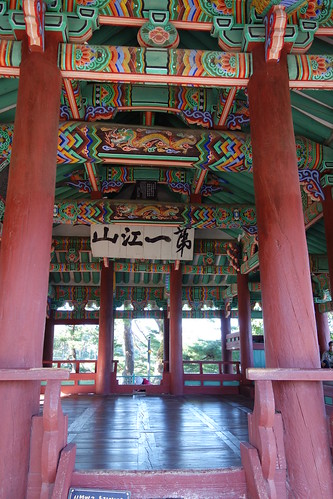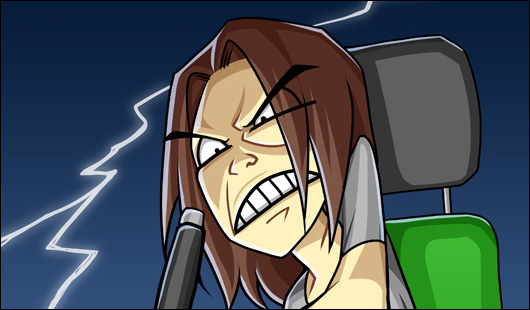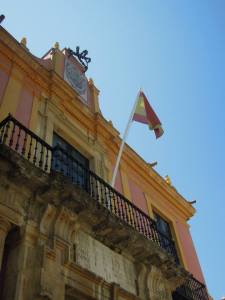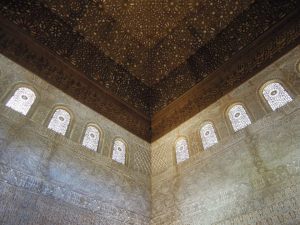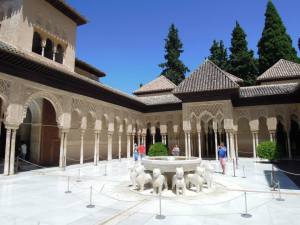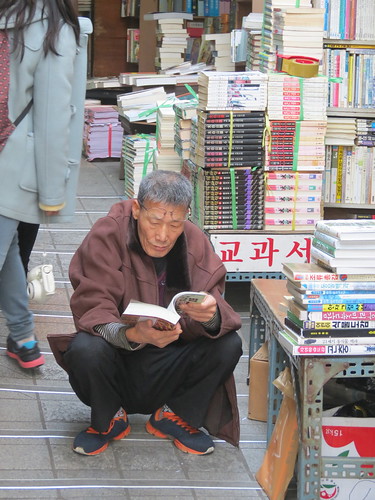First an update on Noah the dog (
original post here), after my concerns about how my in-laws were taking care of him I was then slightly disappointed to learn that they also couldn't keep him. Why oh why they couldn't have realised this before they got him, lord only knows, it could have saved them, me, and more importantly the dog a lot of heartache. For a variety of reasons my in-laws had to give him up.
Despite the chopping and changing of owners being horrible for the dog, I am at least optimistic about who they have given the dog to; a man who owns other dogs and doesn't believe in keeping them tied-up outside. I seems as if he has other dogs and cats also, so if he can train Noah well enough, it seems like he will have a lot of company. It is certainly far from the perfect solution, but it is at least not the worst that could happen.
So, on to matters of eating meat. I was a vegetarian for about ten years from the age of about 20. I became one not because I knew all that much about how animals were farmed or slaughtered, but simply because I was reading quite a lot of moral philosophy at the time and was logically argued out of it. Basically, there is not any good reason why we should rear and kill animals purely for our own pleasure when clearly the results of doing this are against the animal's best interests or choices (the fact is we should not assume their choices or make them for the animal).
I was fairly strict (in that I wouldn't eat seafood also) for most of these ten years up until I arrived in Korea. For the first year, I ate seafood in Korea as I found myself struggling for vegetarian options (especially as I was so inept at sorting things out at the time generally), but still no meat. However, after I met my wife and started working in a public school I lapsed into eating meat also. My reasons were based around the lower availability of meat alternatives (especially in school food) and the great advantage it gave me in keeping my in-laws and work colleagues happy. I can eat basically anything and I love Korean food. You wouldn't believe how much easier this makes my life in Korea and also how much more liked I am for being this way by Korean people.
Still, I did not eat that much meat generally and in the last few months I have stopped buying it completely, but still eat it if my in-laws serve it up or if it is unavoidable in my school dinners. I still don't drink milk and avoid dairy products as much as possible, but for more practical reasons as I am lactose intolerant.
![]()
A few weeks ago, however, I decided to go back to being a strict vegetarian again. What prompted this change? It was the feelings I had about Noah's situations and the hypocrisy of eating meat at the same time.
I was so concerned for Noah, so much so I was prepared to turn my life upside-down to keep him in a ridiculously unfavourable situation. Even when I realised the expense and the trouble of taking him to Australia, I was for a time trying to find ways in which I could do it. All this despite the fact he was almost impossible to take care of in my small apartment, on my own, and with my work commitments, which was causing me a fair amount of stress. When I had to give him to my in-laws as planned, and then saw the conditions they were keeping him in and the way they were looking after him, I was almost moved to tears.
Noah wasn't being abused by my in-laws, just neglected slightly and not treated with the love and attention I thought a dog needed. His quality of life was not up to scratch.
But this got me thinking while I was eating pork ribs (galbi) round my in-laws house. The dog was outside and I was worried about him, but here I was tucking into meat from a pig that probably had a far lower quality of life than most dogs would have, even in Korea. I knew also that there was no real reason to differentiate between the suffering capacity of a pig and that of a dog. I was a hypocrite, I cared so much about this cute fluffy thing outside because he had become a part of my life and I could see him and his relatively low-level suffering, but I cared very little about the pig I was eating. The only reason I didn't care was because it was out of sight and out of mind. Willful ignorance or delegation of responsibility of rearing and killing what I ate were not good reasons to continue eating meat. I was eating it, I spent money on buying meat and I therefore supported, not only the killing of the animals, but of the cruel factory farm practices where approximately 66% of the animals eaten in the world come from.
A while ago I received a comment on one of my blog post saying exactly this (
here) and the person in question lambasted me for being a hypocrite. Essentially, the comment was right, but I thought it was a tad judgemental. She did not know that I knew about all the issues and had been wrestling with them for quite some time while also dealing with living in a different culture and family (and that I had been a vegetarian for so long). The writer of the comment basically said what many Koreans say when confronted with how they treat dogs and the fact of eating them, "well you eat pigs, cows and chickens, don't you? What is the difference?" In my posts on
abortion and
the treatment of dogs in Korea I stated some of the reasons why I do think there is something special about a dog and that the way they are treated does tell a story about morality in Korean culture. I stand by what I say, if you can't even treat our closest friend in the animal kingdom with some compassion and respect, I don't think this is encouraging and is definitely going to make the job of animals rights campaigners much more difficult in the changing of attitudes towards all animals in general.
At least in Western countries more people do seem to understand that animals can suffer and our close relationship and care of dogs can help us achieve a base for greater compassion and empathy for other animals also. Indeed, I think dogs can really serve as a consciousness raiser for Western people when it comes to the ethical treatment of other animals. Of course, many Korean people have a love of dogs and animals, but the culture is very different towards dogs, especially bigger dogs and because of this Korea doesn't have the head-start most Western countries have in striving for the better treatment of animals.
That said, though, the vast majority of Westerners still don't really seem to care about what happens behind closed doors and pleasure is simply more important to them than the suffering of other sentient beings. In essence Koreans are correct, it is hypocritical of us to come down on them hard over the eating of dogs and the cruelty they sometimes show towards them. As long as we all support factory farming, in particular, by continuing to buy meat products they will always have a point. Their treatment of dogs and the use of them as a food source should serve to make us all feel uncomfortable about what is going on in the meat trade in our own countries.
Knowledge of what really goes on in the meat trade is important; one has a moral obligation not to simply turn a blind eye on what is going on and this is precisely what I had been doing. Noah's predicament set me on the path to rediscovering the horrific amount of suffering we impart on animals on a shocking scale. Reading a couple of books on animal rights by authors such as
Peter Singer or watching documentary videos such as,
"The Earthlings", is enough to put anyone off their appetite for eating meat.
On top of all this I have never heard an anywhere near convincing argument for eating meat in modern developed societies. I watched a debate recently by
Intelligence Squared in Australia on the issue of eating meat and I was fairly shocked how hopelessly inept the side in favour of eating meat were in defending their position. Most people in my experience simply pretend do know things they do not know by saying things like "animals don't suffer" or "slaughter is painless for the animals."
It is hard not to become preachy as soon as you make the decision to be a vegetarian. Once you realise the injustice of how we use animals for our own pleasure it is hard not to be outraged by it. Factory farming, especially, compares frighteningly well to the Holocaust, for example, because if you can accept that there is even a chance that animals can suffer and feel pain in similar ways to which humans can suffer, our conscience should be heavily weighed-down by what is happening daily with animals. Back in 2001 an average of 2.5 million animals were killed daily for the purpose of food, the vast majority in abattoirs. This figure is almost certainly much higher at present.
Perhaps the way forward is a compromise; I find it hard to be so upset about free-range animals as a source for food. I think there are still problems with slaughter, but in principle the life of a cow roaming around a large pasture before being killed, for example, is less troubling. In an ideal world though, there would still be a massive issue with regard to the moral treatment of animals because even ethically-reared animals often end-up going to abattoirs to be killed, which are grim places indeed, not to mention the troublesome issue of the transport of them to the abattoirs. Even if the methods used to kill the animals were proved to be utterly painless, both mentally and physically, can we guarantee that every time an animal is killed this is so? This seems to be a problem.
Think of your own job or even general tasks and hobbies and how many small mistakes you make over the length of one day; just writing the last sentence I had to make 3 corrections. Make small mistakes in the killing of animals and you can cause extreme pain and suffering. These mistakes become more likely due to time constraints caused by trying to process as many animals as possible in order to save/make more money and cope with demand from consumers. This also assumes the people responsible for killing the animals in abattoirs are all well-adjusted, highly moral human beings, and considering what the job entails and the potential for a significant amount of desensitisation to killing and pain that must occur even over the space of just one day on the job, this seems highly unlikely.
So there you have it, a blog basically dedicated to promoting the idea of becoming a vegetarian, with some small relevance to living in Korea. I guess though, that conclusions we come to in life and the following decisions we make can really be affected by traveling and living in other countries. The true experience of another culture is often an unsettling one, which forces us to confront some uncomfortable issues regarding our own. Sometimes we are well aware these things exist, we can play-out thought experiments in our heads, but actually having to deal with it first-hand in another culture often brings the message home with frightening and possibly life-changing clarity. This why if you live in a culture different to your own for a long enough period of time, you will begin to slowly change many of the ideas, principles, and ways of living you previously thought of as normal or simply took for granted. This is precisely why, as it is famously said, travel broadens the mind.




























































.jpg)





